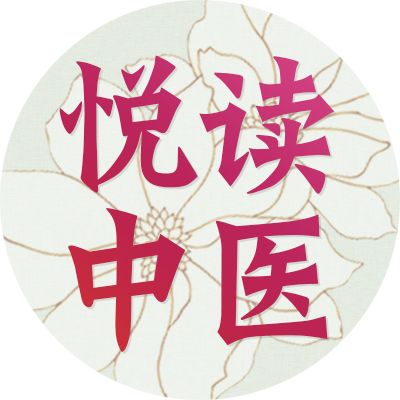 Daily TCM Insights at 11:30 AM
Daily TCM Insights at 11:30 AM
Authoritative and high-quality knowledge in Traditional Chinese Medicine
If you like it, please star it for me
Editor’s Introduction
The method of huoxue huayu (活血化瘀) is frequently used in clinical practice in Traditional Chinese Medicine (TCM). It refers to the use of warming and blood-activating substances to eliminate stagnation in the meridians and organs, thereby achieving the goal of removing stasis. Nowadays, the huoxue huayu method is receiving increasing attention and is widely applied in the treatment of various diseases across different specialties, achieving notable therapeutic effects. Today, we will explore the application of huoxue huayu in surgery.

1. Qi-Boosting and Stasis-Removing Method
Qi promotes blood circulation; when Qi is strong, blood flows freely without stagnation. Conversely, Qi deficiency leads to weak blood flow, resulting in stasis. This is a common principle. However, since blood is the mother of Qi, prolonged stasis can lead to Qi deficiency and blood stasis syndrome. This is often seen in conditions such as deep vein thrombosis and traumatic hemiplegia.The treatment focuses on Qi tonification, with blood-activating and stasis-removing methods as adjuncts, such as the Bu Yang Huan Wu Decoction (补阳还五汤), to ensure sufficient Qi and blood, smooth circulation, and reduction of swelling and pain.
Case Study:Mr. Ma, male, 41 years old, a worker. Initial diagnosis on October 13, 1981: left lower limb deep vein thrombosis complicated by ulcer for one and a half years. The affected limb was swollen, making walking difficult, with an ulcer forming on the outer side of the mid-tibia, measuring 2cm × 2cm, exuding serous fluid, with surrounding purple-black discoloration slightly elevated above the skin surface, accompanied by eczema, yellow greasy tongue coating, and a deep, wiry pulse. The diagnosis was Qi deficiency and blood stasis with damp-heat accumulation. The treatment was aimed at tonifying Qi, activating blood, and clearing heat and dampness.
Prescription:Huang Qi (Astragalus) 30g, Dang Shen (Codonopsis) 12g, Yi Yi Ren (Job’s Tears) 15g, Ji Xue Teng (Spatholobus) 30g, Dan Shen (Salvia) 12g, Chuan Niu Xi (Cyathula) 10g, Pao Jiao Zhu (Cuttlefish Bone) 10g, Di Long (Earthworm) 10g, Pu Gong Ying (Dandelion) 15g, Che Qian Zi (Plantago Seed) 10g, external application of Sheng Ji Xiang Pi Gao (Skin Regeneration Ointment). After taking 3 doses, the swelling in the affected limb decreased; after 9 doses, the ulcer healed. Follow-up after 5 months showed no recurrence of the ulcer, and the patient returned to work, with only mild swelling during fatigue.
2. Qi-Regulating and Blood-Activating Method
Qi and blood share the same source; Qi leads blood, and blood follows Qi. When Qi is stagnant, blood coagulates, and when blood is stasis, Qi is obstructed. Conditions such as early-stage cholecystitis, appendicitis, intestinal adhesions, and various peripheral vascular diseases often exhibit Qi stagnation and blood stasis.Only by using Qi-regulating herbs in conjunction with blood-activating herbs can we enhance the effectiveness of the huoxue huayu method. Common formulas include Fu Yuan Huoxue Decoction (复元活血汤). A typical case is as follows.
Case Study:Ms. Ding, female, 35 years old, employee of the Taiyuan Railway Bureau. Initial diagnosis on May 27, 1981: left chest wall venous inflammation for half a month. Two weeks prior, due to a quarrel with her husband, she pretended to be ill, and the next day a cord-like swelling appeared from her left chest to the rib area, measuring 30 cm in length, red, swollen, hard, and painful, accompanied by chest tightness and vomiting, with a pale tongue and white coating, and a wiry pulse. The diagnosis was liver Qi stagnation, Qi stagnation, and blood stasis. The treatment was to soothe the liver, regulate Qi, and activate blood to remove stasis. The formula used was Fu Yuan Huoxue Decoction with modifications.
Prescription:Chai Hu (Bupleurum) 10g, Xiang Fu (Cyperus) 10g, Tian Hua Fen (Trichosanthes Root) 10g, Dang Gui (Angelica) 12g, Pao Jiao Zhu (Cuttlefish Bone) 10g, Hong Hua (Safflower) 6g, Jiu Jun (Wine-Soaked Juniper) 10g, Dan Shen (Salvia) 30g, Chuan Lian Zi (Toosendan) 10g, Yan Hu Suo (Corydalis) 10g, Ban Xia (Pinellia) 10g, Sheng Jiang (Fresh Ginger) 3 slices. After 5 doses, although the swelling extended from the left chest to the left iliac crest, the pain had ceased, vomiting stopped, appetite increased, and chest tightness reduced. After another 3 doses, the swelling and pain basically disappeared. Follow-up in April 1982 showed no recurrence after recovery.
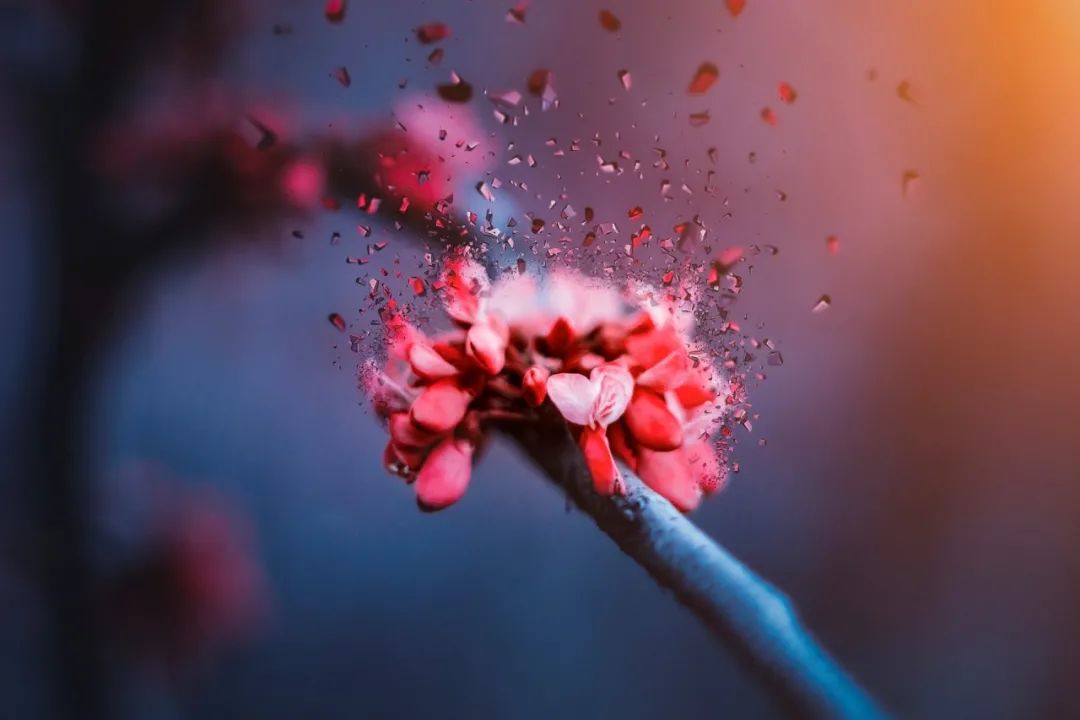
3. Warming Channels and Activating Blood Method
External cold entering the interior or Yang deficiency with internal cold can lead to cold coagulation and blood stasis. Conditions such as gangrene (thromboangiitis obliterans), frostbite, Raynaud’s disease, and certain types of arthralgia often exhibit such changes.The treatment involves warming Yang, dispelling cold, activating blood, and unblocking the meridians. Once the cold pathogen is resolved, blood can flow freely, and Yang Qi can be distributed, warming the limbs.
Case Study:Ms. Lü, female, 48 years old, from Yuanping. Initial diagnosis on July 7, 1982: pain in both hands and feet, cold intolerance for over 70 days. The patient experienced paleness in her hands and feet when exposed to cold, followed by cyanosis and unbearable pain, which eased with warmth. Thus, she wore gloves and cotton shoes even in summer. Despite various treatments, the pain worsened, and she required assistance to walk, accompanied by amenorrhea. An electrocardiogram was normal, and a microcirculation report indicated “moderate abnormal microcirculation”; the tongue showed stasis spots, with a white coating and a thin, rapid pulse. The diagnosis was Raynaud’s disease. The condition was attributed to Yang deficiency, cold coagulation, and blood stasis. The treatment was to warm and unblock the blood vessels.
Prescription:Pao Fu Zi (Aconite) 12g, Xi Xin (Asarum) 3g, Shu Di Huang (Rehmannia) 15g, Rou Cong Rong (Cistanche) 10g, Ba Jiao Tian (Morinda) 10g, Bai Shao (White Peony) 24g, Xuan Shen (Scrophularia) 15g, Gui Zhi (Cinnamon Twig) 6g, Ma Huang (Ephedra) 3g, Chuan Niu Xi (Cyathula) 10g, Pao Jiao Zhu (Cuttlefish Bone) 10g, Di Long (Earthworm) 10g, Dan Shen (Salvia) 30g, Ji Xue Teng (Spatholobus) 30g, Gan Cao (Licorice) 15g. After 6 doses, menstruation resumed; after 8 doses, cold pain decreased; after 18 doses, microcirculation improved to “mildly abnormal microcirculation”. By November 15 of the same year, after further modifications and continuous use of 43 doses, all symptoms significantly improved, cold intolerance decreased, and the color of the hands and feet returned to normal. Although there was still mild pain and numbness when exposed to cold, the patient could manage daily activities and household chores. The dosage was reduced, and intermittent use was continued to achieve full recovery.

4. Cooling Blood and Removing Stasis Method
Excess heat entering the blood can damage blood vessels, or blood heat can lead to abnormal bleeding, resulting in stasis. Conditions such as furuncles, abscesses, hemorrhagic purpura, allergic vasculitis, and nodular polyarteritis exhibit such changes.The treatment involves clearing heat, detoxifying, cooling blood, and removing stasis. Once the heat dissipates, blood circulation normalizes, and stasis is resolved, allowing for unobstructed meridians and detoxification of heat toxins. Common formulas include San Ru Guo Jian Decoction (散肿溃坚汤) and Liang Xue Di Huang Decoction (凉血地黄汤).
Case Study:Ms. Zhang, female, 20 years old. Initial diagnosis on March 23, 1983: since mid-July 1982, a subcutaneous nodule developed on the right foot, red, swollen, and painful. Subsequently, several similar nodules appeared along the left lower limb’s venous path. Despite various treatments, the condition did not improve, and she was recently diagnosed with allergic vasculitis by the dermatology department of the provincial hospital, with a thin pulse and thick white coating. This was due to damp-heat invading the meridians, obstructing the circulation of Ying blood, leading to stasis in the skin. The treatment was to clear heat, eliminate dampness, activate blood, and unblock the meridians.
Prescription:Dan Shen (Salvia) 10g, Ji Xue Teng (Spatholobus) 30g, Chuan Niu Xi (Cyathula) 10g, Pao Jiao Zhu (Cuttlefish Bone) 10g, Tao Ren (Peach Kernel) 10g, Hong Hua (Safflower) 10g, Lian Qiao (Forsythia) 12g, Zi Hua Di Ding (Viola) 30g, Pu Gong Ying (Dandelion) 30g, Si Gua Luo (Luffa) 10g, Yi Yi Ren (Job’s Tears) 15g, Che Qian Zi (Plantago Seed) 10g. After 3 doses, the hard nodules softened; after 6 doses, pain decreased; and after 9 doses, the nodules on the anterior tibia disappeared.
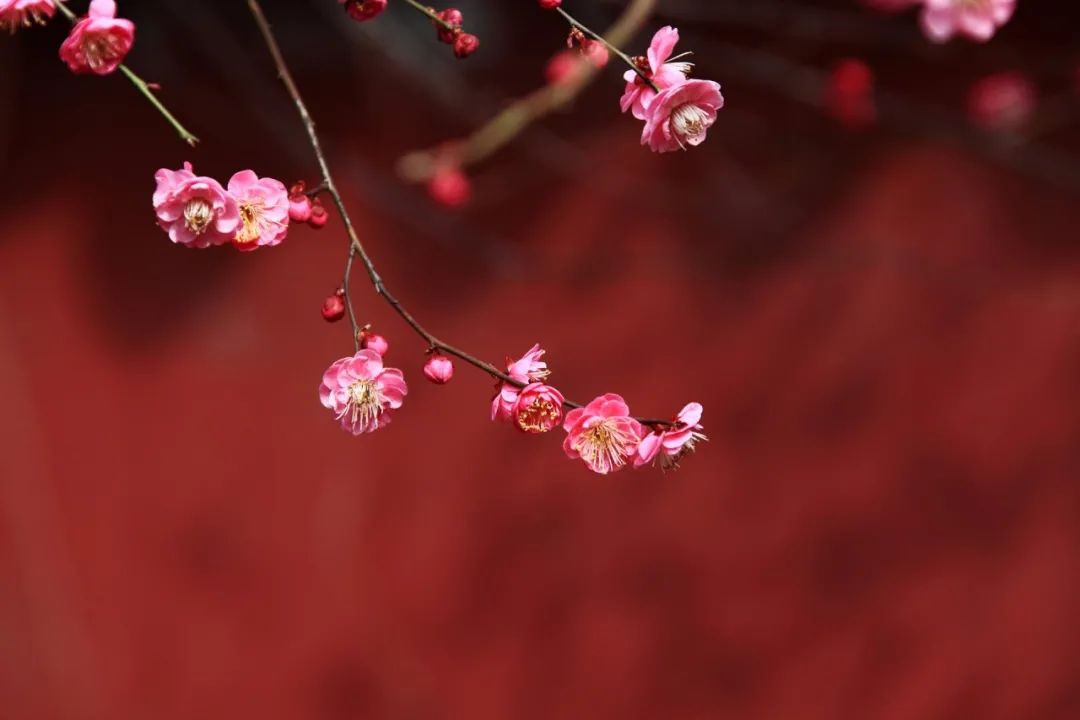
5. Activating Blood and Promoting Diuresis Method
Water and blood are different names but share the same source, mutually supporting each other. Water (body fluids) can generate blood, and blood can transform into water. In certain diseases, water accumulation can lead to blood stasis, and blood stasis can cause water retention, creating a cycle of causation, as seen in conditions like elephantiasis, benign prostatic hyperplasia, hydrocele, and chronic nephritis.The treatment focuses on activating blood, removing stasis, promoting diuresis, and eliminating dampness. Once blood stasis is resolved, the Qi of the San Jiao can circulate, allowing water and dampness to flow normally, thus alleviating the obstruction and resolving the underlying cause of the symptoms.
Case Study:Mr. Ren, male, 8 years old. Initial diagnosis on April 13, 1985: left testicular hydrocele for 5 years, lighter in the morning and heavier in the evening, initially caused by trauma. He had previously taken herbs to soothe the liver, promote diuresis, and soften the masses, but the condition recurred after stopping the medication. Upon examination, the left scrotum was swollen, and a long oval mass could be palpated above the spermatic cord, smooth and cystic, with a positive transillumination test, white coating, and a slow pulse. The diagnosis was hydrocele, attributed to Qi stagnation and blood stasis, with cold dampness descending. The treatment was to activate blood, regulate Qi, warm Yang, and promote diuresis.
Prescription:1) Yun Ling (Poria) 6g, Zhu Ling (Polyporus) 6g, Ze Xie (Alisma) 6g, Gui Zhi (Cinnamon Twig) 3g, Chuan Lian Zi (Toosendan) 4.5g, Ju Zi (Tangerine Seed) 6g, Che Qian Zi (Plantago Seed) 6g, Huang Qi (Astragalus) 9g, Hong Hua (Safflower) 6g, Tao Ren (Peach Kernel) 6g, decoct in water. 2) Dang Gui (Angelica) 30g, Ji Xue Teng (Spatholobus) 30g, Mang Xiao (Mirabilite) 30g, Bai Fan (Alum) 12g, Wu Bei Zi (Galla Chinensis) 12g, decoct for external wash of the affected area, once daily for 30 minutes. After taking 6 doses, the scrotum returned to near normal, with no significant fluid accumulation, and the mass above the spermatic cord softened and shrank. After another 6 doses, the swelling completely resolved, achieving clinical cure. The patient was then treated with Shen Ling Bai Zhu San (参苓白术散) for follow-up. The patient experienced a recurrence but was treated with the original method and ultimately cured with pills.
6. Activating Blood and Dispelling Wind Method
Insufficient Qi and blood lead to empty meridians, allowing wind pathogens to invade, obstructing the meridians and causing blood stasis, resulting in joint pain and facial paralysis.The treatment involves activating blood, removing stasis, and dispersing wind pathogens.
Case Study:Ms. Zhang, female, 42 years old, initial diagnosis on November 19, 1978: suddenly developed left-sided facial paralysis yesterday, with incomplete closure of the left eye, drooping of the mouth, and difficulty speaking. The patient had been healthy, and the cause of the onset was unclear. The pulse was wiry and thin, with a thin white coating. This was attributed to insufficient Qi and blood, leading to empty meridians and invasion by wind pathogens. The treatment was to regulate blood, activate blood, and dispel wind to correct the facial features.
Prescription:Gui Wei (Angelica) 10g, Chi Shao (Red Peony) 10g, Chuan Xiong (Ligusticum) 6g, Bai Fu Zi (Typhonium) 10g, Jiang Can (Silkworm) 6g, Quan Xie (Scorpion) 3g, supplemented with local acupuncture. After taking 4 doses, the eye closure normalized, and the facial droop decreased, with only slight drooping during speech and laughter. After taking another 6 doses, the patient was cured. Follow-up at the end of 1985 showed no recurrence, and the facial features were normal, with no signs of illness.

7. Stasis-Resolving and Stone-Expelling Method
Ureteral stones are often associated with kidney deficiency and bladder heat, leading to the condensation of fluids into stones. However, if stones remain stagnant in the body, they will inevitably obstruct Qi, causing blood stasis, and as blood stasis obstructs the meridians, the urinary tract becomes obstructed, leading to larger stones. The two conditions are interdependent, worsening each other.The treatment must combine blood-activating and stasis-removing methods with stone-expelling and diuretic methods. Once stasis is resolved, the stones can be reduced and expelled; promoting diuresis increases urine output, providing the main force for stone expulsion. The combination of both methods achieves the goal of stone expulsion.
Case Study:Mr. Ma, male, 53 years old, initial diagnosis on March 2, 1983: right ureteral stone, discovered for over three months. Despite treatment by renowned doctors in both Western and Chinese medicine, the condition did not improve. Due to the discovery of hydronephrosis, surgery was recommended to prevent kidney damage. The patient had a history of renal colic since 1980 but no significant symptoms otherwise, with a good constitution, rosy complexion, white coating, and a slow pulse. This was attributed to prolonged stasis of stones, leading to Qi and blood obstruction. The initial treatment plan was to break Qi and resolve stasis.
Prescription:San Leng (Sparganium) 10g, E Zhu (Curcuma) 10g, Qing Pi (Green Tangerine Peel) 10g, Chen Pi (Aged Tangerine Peel) 10g, Zhi Shi (Bitter Orange) 10g, Ji Nei Jin (Chicken Gizzard Lining) 10g, Che Qian Zi (Plantago Seed) 10g, Gan Cao Shao (Licorice Stem) 6g.
March 5, Second Diagnosis:After taking three doses of the above prescription, there was no significant change in pulse or symptoms. The strong medication was only suitable for temporary use and not for prolonged treatment, so the plan was changed to diuretic and stone-expelling methods.
Prescription:Jin Qian Cao (Lysimachia) 30g, Hai Jin Sha (Lygodium) 15g, Qu Mai (Dianthus) 12g, Bian Xu (Polygonum) 10g, Shi Wei (Pyrrosia) 10g, Che Qian Zi (Plantago Seed) 10g, Bai Shao (White Peony) 15g, Dan Pi (Moutan) 10g, Gan Cao Shao (Licorice Stem) 6g. After taking one and a half doses, on March 7, a stone measuring 1.7cm × 0.8cm was expelled without significant pain, leading to a complete recovery.
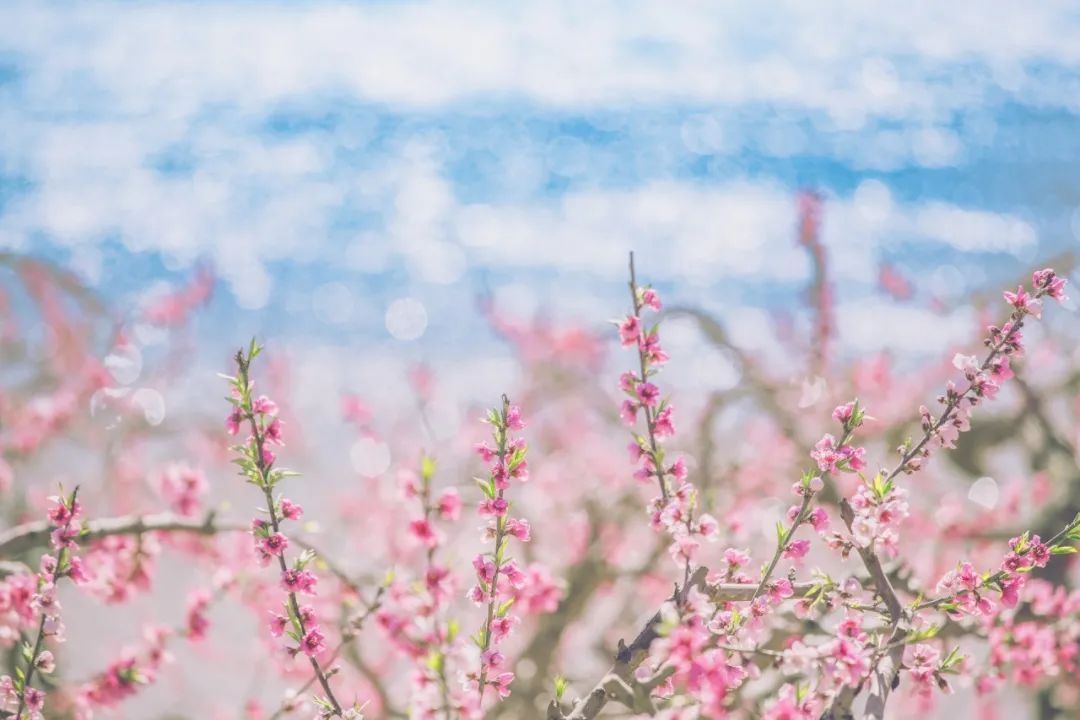
8. Activating Blood and Promoting Lactation Method
Breast abscesses often stem from milk stasis, as breast milk is derived from the Qi and blood of the spleen and stomach. Milk stasis is often due to Qi stagnation and blood stasis, which is why breast abscesses frequently have these underlying causes.In the early stages of breast abscess, the primary treatment is to activate blood, regulate Qi, and unblock milk to disperse the masses. Once Qi and blood are unblocked, the stasis resolves, and pus formation is less likely.
Case Study:Ms. Zhang, female, 28 years old. Initial diagnosis on June 12, 1981: lump in the breast for 3 days, with fever, headache, and general malaise. Both breasts were swollen and painful, and the next day, lumps measuring 4cm × 3cm could be palpated above both breasts. Due to fever, the patient stopped breastfeeding, leading to increased breast swelling and pain. The tongue showed a mix of yellow and white coating, and the pulse was wiry and slightly rapid. This was diagnosed as the milk stasis phase of breast abscess. Due to Qi stagnation and blood stasis, the milk could not flow smoothly, leading to lump formation. The treatment was to clear heat, detoxify, activate blood, and promote lactation, using Shao Yao Gua Lou Gan Cao Decoction (芍药瓜蒌甘草汤) with modifications.
Prescription:Chi Shao (Red Peony) 30g, Pu Gong Ying (Dandelion) 24g, Jin Yin Hua (Honeysuckle) 30g, Lian Qiao (Forsythia) 15g, Gua Lou (Trichosanthes) 15g, Dang Gui (Angelica) 10g, Dan Pi (Moutan) 10g, Ju Ye (Tangerine Leaf) 10g, Wang Bu Liu Xing (Vaccaria) 10g, Lu Lu Tong (Liquidambar) 10g. After taking 3 doses, lactation was smooth, lumps dissipated, and there was no tenderness, with a reduction in dosage leading to recovery after 2 additional doses.
In summary, the huoxue huayu method is a reliable therapeutic approach. Regardless of the disease, as long as there is evidence of blood stasis, it can often be applied, which is referred to as “treating different diseases with the same method.” However, it is essential to grasp the key points in its application. First, Qi, blood, and water (body fluids) share the same source but differ in form, and they can mutually influence each other. Therefore, in the pathological process of these diseases, whenever there is evidence of blood stasis, it is advisable to clarify the primary and secondary conditions and appropriately incorporate the huoxue huayu method for quicker results. Second, heat expansion and cold contraction are common physical properties; blood, being a liquid, is significantly affected by temperature. In cases of ulcers and vascular diseases, blood stasis often occurs due to cold or heat. Only by accurately distinguishing between cold and heat, deficiency and excess, and incorporating blood-activating methods can reliable therapeutic effects be achieved. Additionally, phlegm and stasis can interlock, leading to masses and tumors, and blood stasis can lead to stone formation. These complex conditions, if accurately diagnosed and appropriately treated with the huoxue huayu method, often yield significant therapeutic effects.
 Recommended Reading
Recommended Reading
Professor Zhao Shanghua’s clinical experience in treating peripheral vascular diseases over the past 40 years——
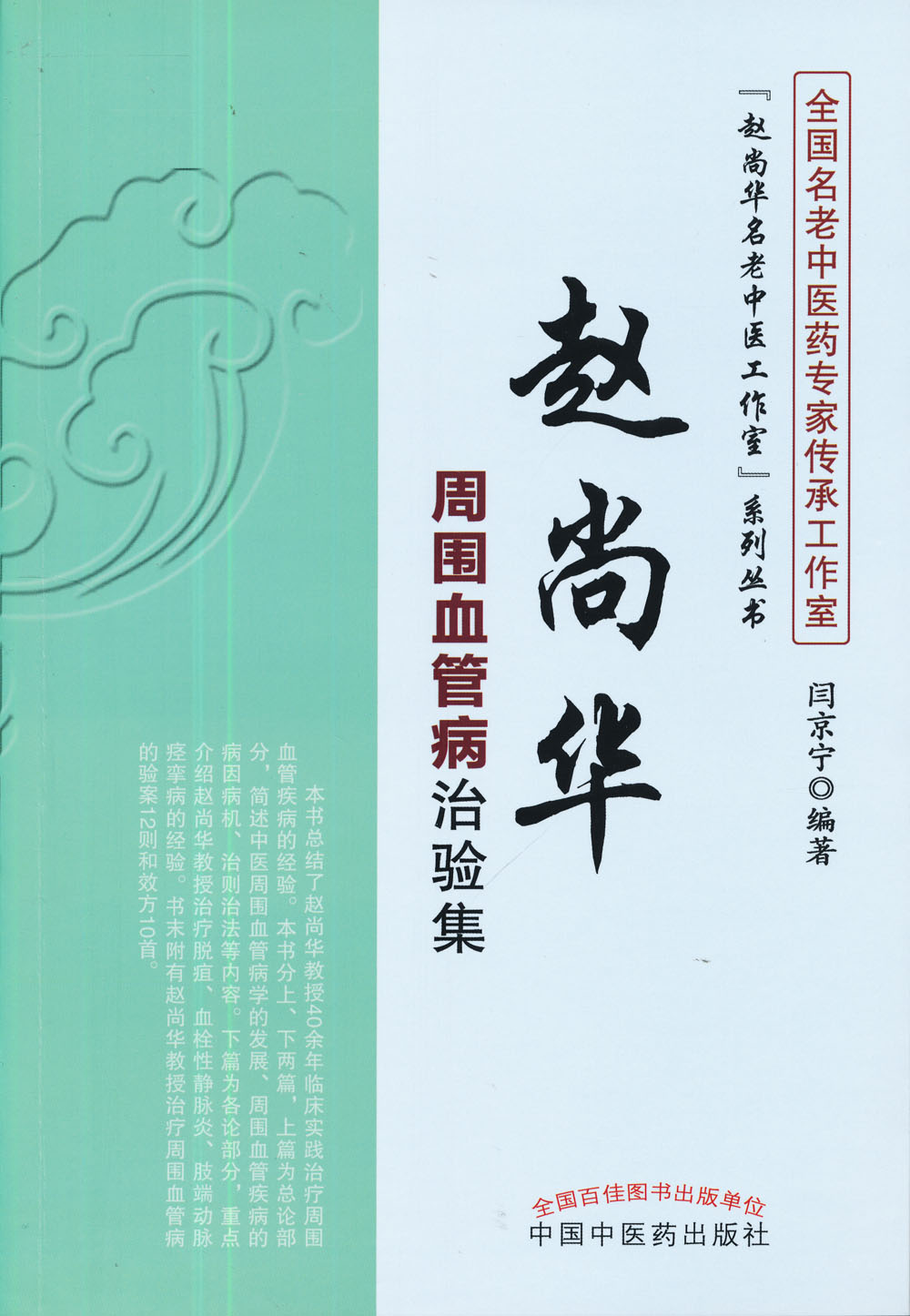

“Zhao Shanghua’s Collection of Clinical Experiences in Treating Peripheral Vascular Diseases”Click on the cover to enter the Yuyijia TCM Academy to purchase this book
Scan the code for a free trial read
This book is divided into two parts: the first part is a general discussion, briefly describing the development of TCM in peripheral vascular diseases, the etiology, pathogenesis, treatment principles, and methods. The second part focuses on specific discussions, highlighting Professor Zhao Shanghua’s experiences in treating gangrene, thrombotic venous inflammation, and peripheral artery spasm. The book concludes with 12 clinical cases and 10 effective formulas for treating peripheral vascular diseases.
Previous Highlights
Eczema and dermatitis are difficult to treat; TCM expert Zhao Bingnan has 10 effective external treatment methods.
Important: The results of the 6th National TCM Reading Activity have been announced.
Three meals are key to health! Traditional Chinese medicine from Tong Ren Tang offers unique dietary therapy to promote longevity!
 Copyright Statement
Copyright Statement
Some content of this article is selected from “Zhao Shanghua’s Collection of Clinical Experiences in Treating Peripheral Vascular Diseases” (published by China Traditional Chinese Medicine Press, edited by Yan Jingning), and the final interpretation rights belong to the original author. This article is recommended and published by Yue Du Zhong Yi (WeChat ID: ydzhongyi), with cover images and illustrations sourced from Shetu Network, copyright belongs to the original author. If there is any improper use, please contact for deletion. Unauthorized reproduction is prohibited!

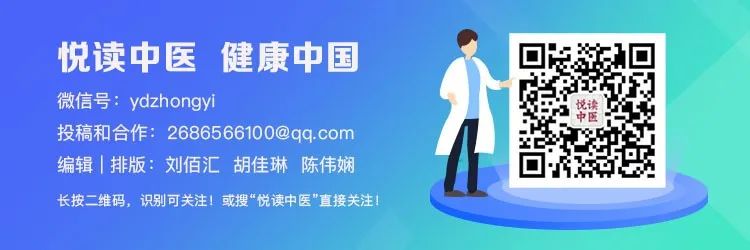
 Click“Read the original text”to purchase the recommended book immediatelyGood articles must be “seen”
Click“Read the original text”to purchase the recommended book immediatelyGood articles must be “seen”

